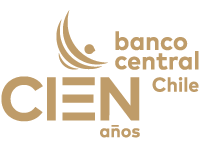Financial Technology Hub
Financial Technology Hub
The Financial Technology Hub is a unit within the Central Bank of Chile dedicated to carrying out projects that enable the Bank to acquire early, practical knowledge of emerging technologies that may impact financial infrastructure, particularly in the areas of payment systems and financial stability.
The Hub also seeks to understand the potential effects of these innovations on the financial system and payment infrastructure, anticipating opportunities and challenges. Its work facilitates informed decision-making and contributes to strengthening the Bank’s internal capabilities in a constantly evolving financial environment.
To achieve this, the Hub actively engages with the innovation ecosystem, working closely with international organizations, the private sector, academia, and other central banks. This interaction not only helps identify relevant technological developments but also assess their applicability within the context of the Bank’s functions and their regulatory and operational implications.
Through these initiatives, the Financial Technology Hub reinforces the Central Bank’s role as a proactive actor in adapting to changes in the financial ecosystem, ensuring that innovation is integrated responsibly and in alignment with its mandate.
Focus Areas

Innovation Ecosystem
The Hub actively participates in the innovation ecosystem, working closely with international organizations such as the Bank for International Settlements (BIS), the private sector, academia, and other central banks. This interaction not only helps identify relevant technological developments but also assess their applicability within the context of the Bank’s functions and their regulatory and operational implications.
Contact us: hub@bcentral.cl

Asset Tokenization
In its role of acquiring early knowledge and understanding the potential effects of innovations on the financial system and payment infrastructure, the hub conducts hands-on exploration of the benefits and challenges surrounding asset tokenization, anticipating opportunities and risks.
According to a definition by the Bank for International Settlements (BIS), tokenization is the process of generating and recording a digital representation of traditional assets—such as financial or real assets—on a programmable platform, such as a distributed ledger (DLT).
A token, as a digital representation of assets, can be issued, transferred, or eliminated (burned) as a result of the programmed features within the smart contract through which it was created. It can also interact with other smart contracts that enable the execution of programmed functionalities, such as delivery versus payment (DvP) or payment versus payment (PvP).

Technological Innovations
In its role of acquiring early knowledge and understanding the potential impact of innovations on the financial system and payment infrastructure, the hub conducts both theoretical analysis and hands-on exploration of the benefits and challenges of new financial technologies.
Some topics of interest for the hub include:
- Settlement innovations
- Distributed Ledger Technology (DLT) / Blockchain
- Artificial intelligence agents

Next-Generation Financial Market Infrastructure
Financial market infrastructure includes the payment systems we use daily, as well as more specialized systems that transfer money, stocks, bonds, and other financial assets between banks and financial institutions. Some of these systems are provided by central banks as public goods, while others are offered by private industry participants and supervised by regulatory entities such as the central bank to ensure their security and resilience.
The Central Bank of Chile has closely followed this evolution and is actively exploring new solutions to strengthen the country’s payment systems. An example of this is its participation in the FuSSE project in collaboration with the BIS and the Inter-American Development Bank (IDB).

Central Bank Digital Currencies
Central Bank Digital Currencies (CBDCs) are a digital form of money denominated in the national unit of account, representing a liability of the issuing Central Bank. This distinguishes them from private digital money, such as the balance in a bank checking account. This representation of money can be designed for exclusive use among financial institutions (wholesale CBDC) or for broad use across the economy (retail CBDC).
Central banks are studying CBDCs to understand the implications their issuance could have for users, financial institutions, and regulators. Depending on their design, they may bring various benefits or challenges, making it essential for Central Bank to test and analyze them in depth.
